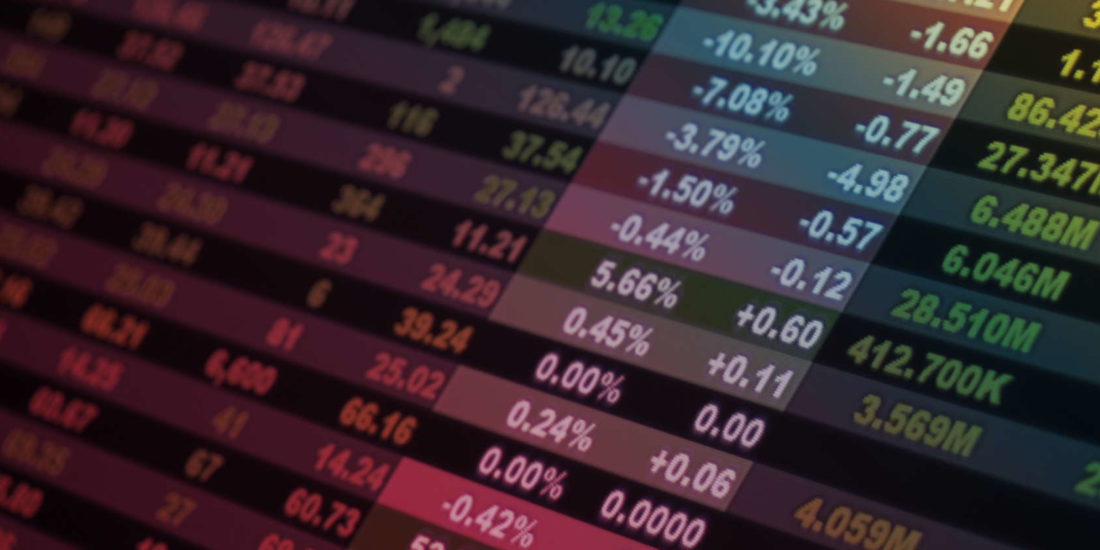
The Rise of the SPAC Wave on Singapore’s Shores
Special Purpose Acquisition Companies or “SPACs” have seen a phenomenal rise in recent years with SPACs listings making up more than half of the public listings in the US in 2021. We also see billionaires and celebrities investing in SPACs and Asian stock exchanges amending their listing rules to allow SPACs listings. This article seeks to explain this phenomena, summarise the rules for listing a SPAC in Singapore and explore whether the SPAC wave will be here to stay on Singapore’s shore.
Special Purpose Acquisition Companies or “SPACs” have seen a meteoric rise. In recent years, SPAC listings grabbed headlines across the world, outperforming traditional IPOs in activity and fund-raising at various instances, with some backed by celebrities such as NBA star Shaquille O’Neal and actor Leonardo DiCaprio.
In 2020, more than 200 SPACs went public in the US, representing more than half of US IPOs in that year and raising more than USD 80 billion. The number of SPAC listings more than doubled in 2021 with more than 600 SPACs raising more than USD 160 billion, and this was despite a softening in Q2 2021 after the US Securities Exchange Commission (SEC) raised concerns over accounting reporting considerations.
What are SPACs?
SPACs are essentially pre-funded listed shell companies used to take private companies public.
SPACs are formed with the sole purpose of identifying and acquiring a privately-held entity with a promising business and/or assets. Following a merger or what is termed as a “business combination” of the shell company and the privately-held entity (a “de-SPAC”), the private company becomes listed, often with a sizable portion of the SPAC IPO proceeds ready to fund its next level of growth.
Why SPACs?
At the heart of a SPAC listing is the speed.
SPACs, at the time of listing, are ultimately shell companies with no business or assets, nor operating history for that matter. The listing process is thus a quick one with the review focused on the track record and reputation of its promoters, termed “sponsors” in the US. SPACs are, furthermore, designed to confer benefits for its three key stakeholders:
- Sponsors: Sponsors are highly-incentivised, being rewarded with a “Sponsor’s promote” which is essentially free or heavily-discounted equity when a de-SPAC happens, but would also stand to lose their upfront capital, termed as “at-risk capital”, if they are unable to effect a de-SPAC within the regulatory timeline.
- Investors: SPACs involve de-SPAC targets which are carefully curated by Sponsors, including private-equity or PE-type investments which are typically inaccessible to investors at large. SPACs thus offer investors the chance to participate in investments which are hitherto unavailable.
- de-SPAC targets: These are privately-held de-SPAC targets, who see the de-SPAC listing process as attractive given the valuation and funding certainty. Unlike a traditional IPO process where funding and valuation are matters of book-building and market forces at the time of listing, a de-SPAC listing allows the target to agree on a valuation, and have peace of mind knowing that the SPAC is already pre-funded. This is particularly useful where the market languishes in periods of volatility and uncertainty.
SPAC Developments Around the World
Bourses around the globe are closely monitoring SPACs activity with a mix of enthusiasm and trepidation, with a number accelerating their efforts in the race for SPAC listings.
Europe caught the SPAC wave early, with SPAC listings sprouting across Europe notably in Amsterdam, Paris and also on the Deutsche Börse. The UK revised its SPAC rules in August 2021. In November, Swiss bourse SIX welcomed the listing and trading of SPACs.
The wave arrived at Asia’s shores soon after. The Singapore Exchange (SGX) launched its SPAC listing framework in September 2021. In December, Bursa Malaysia revised its SPAC rules to promote SPAC listings, and the Hong Kong Stock Exchange (HKSE) also rolled out its new listing regime for SPACs.
Singapore’s SPAC Regime
US markets are recognised as the most established in relation to SPACs, and its SPAC listing regime thus the model upon which SPAC listing frameworks are drawn up or refined upon. Likewise for SGX’s SPAC listing framework, which is broadly similar to the US regime.
Key similarities include:
- Minimum IPO issue price of USD 3.50 (SGD 5.00) compared to US’ minimum USD 4.00
- At least 90 per cent of IPO process held in trust/escrow
- Valuation of de-SPAC target at least 80 per cent of the trust/escrow funds
- Timeline for de-SPAC of 24 to 36 months
- de-SPAC must be approved by independent directors and independent shareholders
- Redemption rights de-coupled from voting decisions
- Detachable warrants
That being said, there are features that are unique to SGX:
- The minimum market capitalisation threshold is higher at USD 110 million (SGD 150 million), compared to US’ requirement of USD 50 to 100 million.
- Sponsors are required to contribute “at-risk capital” of minimum 2.5 per cent to 3.5 per cent of the IPO tranche, at the IPO price, depending on the market capitalisation. This Sponsor’s “skin-in-the-game” is prescribed in Singapore, but is commercially decided in the US having regard to market norms, typically taking the form of forward purchase contracts.
- Dilution cap on Warrants. This is capped at 50 per cent in Singapore, unlike US where there is no specified limit.
US markets are matured with checks and balances both codified and non-codified to safeguard investor’s interests for SPACs. The SGX framework is, however, in its nascent stage, and thus calls on what are “guardrail” features such as the above to enhance investor protection.
One other key difference is that the SGX framework treats a de-SPAC akin to an IPO. The de-SPAC target must meet SGX’s listing admission requirements, have in place disclosure documents comparable to that of a traditional IPO, and is subject to the same level of regulatory review as an IPO. This entails, in brief, a longer time-to-market. In the US, the de-SPAC is understood to be treated as-if any other post-listing M&A transaction (rather than an IPO review), hence potentially a speedier path to listing as compared to a traditional IPO.
Hong Kong has, interestingly, adopted a similar position, requiring the de-SPAC entity to meet its listing admission requirements. The HKSE regime can, however, be said to be even stricter, with features such as:
- SPACs participation limited to (non-retail) Professional Investors; Singapore allows both non-retail and retail participation
- Warrants issue price must be at least 15 per cent above IPO issue price; the warrants issue price for the SGX cannot be lower than the IPO issue price
- 100% lock-up on IPO proceeds (instead of 90 per cent for US and Singapore)
- Requirements on SFC-licensed and regulated individuals being promoters and directors
- Mandatory PIPE investments (7.5 per cent up to 25 per cent) of the negotiated value of the de-SPAC
The Search for the Preferred SPAC Listing Destination
Given that US continues to be the forerunner for SPAC listings, it would inevitably be on the radar of any aspiring Sponsor keen on putting forth a SPAC listing. That said, other considerations abound.
First is liquidity. It is anyone’s guess if the US markets can continue with the level of fund-raising seen at the height of SPAC activity in 2021, particularly when there are more than 300 “live” SPACs that are actively searching for a de-SPAC, coupled with investor fatigue.
Next is the preferences of the de-SPAC targets – would the target be best-served with a US SPAC, or perhaps one in the European or Asian markets? Would the target adopt a near-customer or near-market listing strategy in considering which SPAC to merge with?
There are also macro-economic or geo-political considerations. Technology plays, for instance, would be wary of the ongoing tensions between the US and China and may well prefer a neutral SPAC listing destination.
All of these are ultimately considerations that are present for any traditional IPO, and would likewise define the strategy and the SPAC listing destination for an aspiring Sponsor.
What about Singapore?
Singapore is known for being stable, neutral and pro-business. It is a wealth hub for significant numbers of funds, family offices, and high-net-worth-individuals, all of whom are potential investors for SPACs including as PIPE (Private-Investment-in-Public-Equity) investors.
SGX itself is an award-leading and well-recognised international exchange. In recent months, SGX has worked closely with the Singapore Government in rolling out a suite of incentives aimed at attracting listings of promising, high-growth enterprises via SPACs. These include grants of up to SGD 2 million to defray professional expenses, and also co-investments from government-backed funds such as the SGD 1.5 billion Anchor Fund @ 65 and the SGD 500 million Growth IPO Fund.
The growing interest in Singapore SPACs can also been seen by the addition of Cantor Fitzgerald – a top underwriter of SPACs in the US – as an accredited issue manager in Singapore, which came swiftly after SGX announced its SPAC listing framework. In January 2022, SGX welcomes three SPAC listings – Vertex Tech, Pegasus Asia and Novo Tellus, clearly evidencing the burgeoning level of interest.
Notably, Temasek has, through its subsidiary, participated as cornerstone investor in the IPOs of Vertex Tech and Novo Tellus. This sends the signals to the market that that besides rolling out the IPO grants, the Singapore Government is also actively supporting and promoting SPAC listings in Singapore.
Our Thoughts
We expect SPACs to continue enjoying moderate to high levels of activity in 2022. It is clear that SPACs are here to stay, as an interesting and welcomed alternative to the traditional mainstream IPO route. The benefits of funding and valuation certainties aside, SPACs can potentially shorten the life-cycle of many PE portfolio companies, allowing them to get listed earlier and giving them access to further funding through the public capital markets.
As SPAC activity continues, listing frameworks would, in parallel, continue to evolve and be refined. It would be interesting to see if there would be increasing confluence or divergence in the listing frameworks adopted by various jurisdictions, as bourses seek the fine balance between a “SPAC-tacular” product while mindful of its “SPAC-culative” nature.






